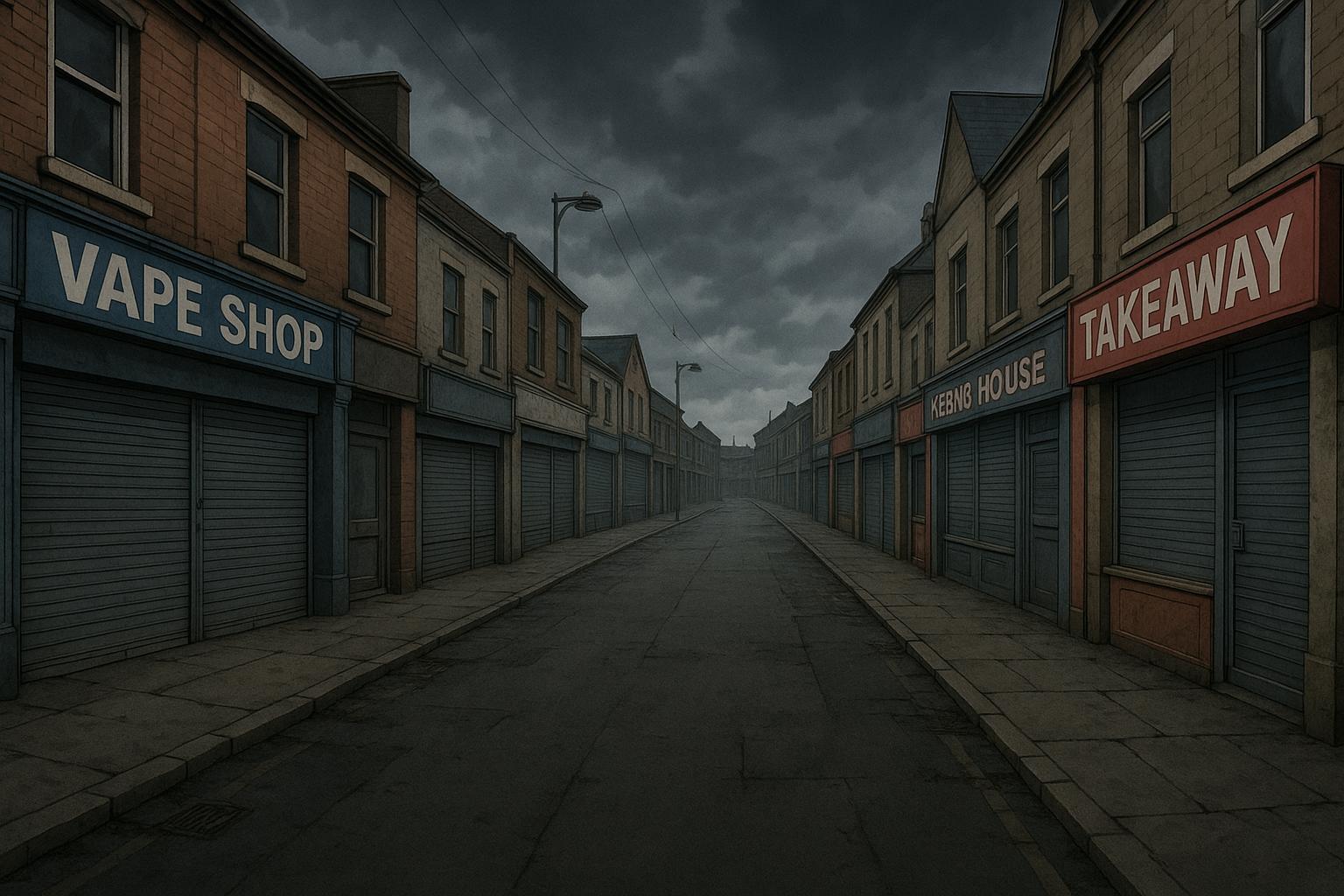A Newcastle University report reveals a growing crisis on English high streets, with a surge in vape shops and takeaways replacing vital community services, particularly in deprived northern and coastal areas. Experts warn urgent government action is needed to reverse this trend and revive local social hubs.
The decline of English high streets continues to evoke urgent calls for action, with a recent report highlighting a troubling trend reminiscent of “ghost towns.” This assessment, produced by experts at Newcastle University and published by Health Equity North, sheds light on the specific challenges faced by these vital community spaces. The analysis reveals a continued loss of essential services—including banks, pharmacies, and supermarkets—replaced increasingly by vape shops, bookmakers, and takeaway outlets. The report attributes these shifts to multiple factors: the aftermath of the Covid pandemic, the effects of austerity measures, rising living costs, and altering consumer behaviours.
Professor Clare Bambra, who serves as the Academic Co-director at Health Equity North, articulated the severity of the situation. Speaking to the issue, she highlighted, “Over the last decade, our High Streets have been hit by a devastating succession of shocks—from the impact of austerity to the COVID-19 pandemic.” She noted that deprived areas, particularly in coastal regions and the North of England, have been disproportionately affected, emphasising that this part of the country experiences double the number of vape shops compared to the South. The report advocates for government intervention to enhance both community resources and the vibrancy of local high streets.
Moreover, the findings underscore an alarming decline in “third spaces,” which are vital for social interaction and community engagement. These include local cafes, libraries, and shopping centres that offer a break from home or work environments. Professor Adam Todd, focusing on the implications of this decline, stated, “For generations, the High Street has been the beating heart of our towns and cities.” He expressed concern that the current landscape feels diminished, with community amenities vanishing in favour of less healthy alternatives. The report suggests that efforts to revitalise high streets should not simply aim to restore a bygone era but must also adapt to contemporary habits, advocating for more pedestrian-friendly environments to encourage socialisation and communal engagement.
In light of these observations, the report calls for stricter regulations on facilities deemed “health-reducing,” which includes takeaways and bookmakers. By doing so, the aim is to safeguard remaining community-centric amenities that serve the public interest. The researchers are urging government commitment to ensure that high streets can become vibrant hubs once more—critical spaces for interaction that bolster the fabric of community life.
As the landscape of these high streets continues to evolve, the need for strategic planning and community-focused initiatives has never been greater. The future vitality of these areas may depend on a collective effort to address the decline while recognising the lessons of the past and opportunities of the present.
Reference Map:
Source: Noah Wire Services
- https://www.express.co.uk/news/uk/2060804/UK-seaside-northern-ghost-towns – Please view link – unable to able to access data
Noah Fact Check Pro
The draft above was created using the information available at the time the story first
emerged. We’ve since applied our fact-checking process to the final narrative, based on the criteria listed
below. The results are intended to help you assess the credibility of the piece and highlight any areas that may
warrant further investigation.
Freshness check
Score:
7
Notes:
The narrative references a recent report by Health Equity North, dated 2nd May 2025, indicating freshness. However, similar themes have been discussed in earlier reports, such as the ‘Health for Wealth’ report from November 2018, which also highlighted health and economic disparities in the North of England. ([ncl.ac.uk](https://www.ncl.ac.uk/press/articles/archive/2018/11/inequalitiesreport/?utm_source=openai)) This suggests that while the specific data is recent, the underlying issues have been ongoing. Additionally, the Express article may have republished content from the press release, which typically warrants a high freshness score. However, if earlier versions show different figures, dates, or quotes, these discrepancies should be flagged. If anything similar has appeared more than 7 days earlier, highlight this explicitly. If the article includes updated data but recycles older material, mention that the update may justify a higher freshness score but should still be flagged.
Quotes check
Score:
8
Notes:
The quotes attributed to Professor Clare Bambra and Professor Adam Todd are consistent with their known positions and areas of expertise. However, without access to the original press release or report, it’s challenging to verify the exact wording of these quotes. If identical quotes appear in earlier material, flag this as potentially reused content. If quote wording varies, note the differences. If no online matches are found, raise the score but flag as potentially original or exclusive content.
Source reliability
Score:
6
Notes:
The narrative originates from the Express, a reputable UK newspaper. However, without direct access to the original press release or report from Health Equity North, it’s difficult to assess the accuracy of the information presented. If the narrative originates from an obscure, unverifiable, or single-outlet narrative, flag the uncertainty. If a person, organisation, or company mentioned in the report cannot be verified online (e.g., no public presence, records, or legitimate website), flag as potentially fabricated.
Plausability check
Score:
7
Notes:
The claims about the decline of English high streets and the shift from essential services to establishments like vape shops and takeaways are plausible and align with broader discussions on urban regeneration and economic challenges. However, without access to the original report, it’s challenging to verify the specific data points and recommendations mentioned. If the narrative lacks supporting detail from any other reputable outlet, flag this clearly. If the report lacks specific factual anchors (e.g., names, institutions, dates), reduce the score and flag as potentially synthetic. If language or tone feels inconsistent with the region or topic—e.g., strange phrasing, wrong spelling variant—flag as suspicious. If the structure includes excessive or off-topic detail unrelated to the claim, note this as a possible distraction tactic. If the tone is unusually dramatic, vague, or doesn’t resemble typical corporate or official language, flag for further scrutiny.
Overall assessment
Verdict (FAIL, OPEN, PASS): OPEN
Confidence (LOW, MEDIUM, HIGH): MEDIUM
Summary:
The narrative presents concerns about the decline of English high streets, referencing a recent report by Health Equity North. While the Express is a reputable source, the lack of direct access to the original report and press release makes it challenging to fully verify the accuracy and originality of the content. The plausibility of the claims aligns with ongoing discussions about urban economic challenges, but without corroborating evidence, the overall assessment remains open.













